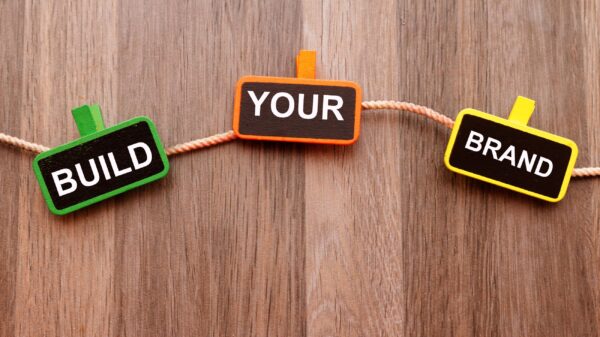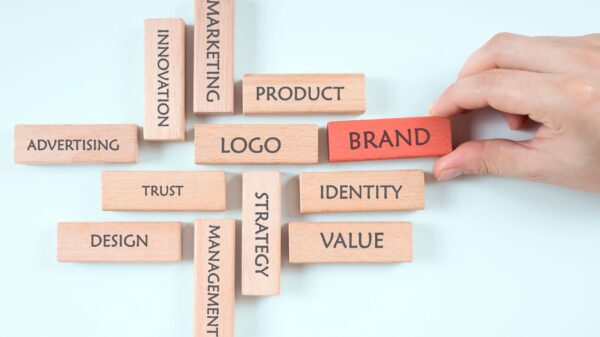Business logos are an integral part of any brand identity. They are the first thing customers notice and are the most important part of a brand’s marketing. A good logo design can create a strong visual connection with customers that will help to build brand loyalty. It is also important that a logo be tailor-made for each company, as a marketable brand identity is essential for businesses of all sizes to remain competitive.
In order to create the best logo, it is important to understand logo psychology and the common logo marks used by design companies. Additionally, having an understanding of the latest logo design trends and the use of logo animation software can ensure that a logo is both modern and memorable. When done correctly, a superb logo should provide a business with an effective, marketable brand identity that can help to improve customer services, build brand loyalty, and contribute to business growth.
Benefits of a Logo
A logo is an essential part of a business’s brand identity, as it helps to create an emotional connection with customers. It can also be used to establish brand recognition – when people see it, they immediately associate it with your business. Furthermore, when customers have an emotional connection with your logo, they become more loyal to your brand.
To increase brand loyalty, companies use logo design to create a distinct visual identity. Design companies can create the best logo for your business, tailor-made to suit your needs.
Establishing Brand Recognition
With the increasing competition in the market, establishing brand recognition has become a necessity for any business. A logo is one of the most effective tools for achieving this recognition. It is a visual representation of the brand that allows customers to identify the company and its offerings. Logos are used in a variety of ways, including on business cards, websites, social media, packaging, and advertisements.
Creating a unique logo that stands out from the competition is essential for building brand recognition. Professional design companies and agencies can help small business owners tailor their logos to their specific needs. They can provide advice on logo design trends, logo animation, and common logo elements.
It is important to avoid generic and cliché designs when creating a logo. Business owners should invest their time and money in creating a logo that is unique and consistent with their brand values and ethics. A well-designed logo can help to differentiate a business from its competitors and create a memorable impression.
A logo is an important part of a company’s identity and can be used to help build customer loyalty. A logo should be easy to recognize and easy to remember. It should also be used consistently across all of the company’s branding materials.
Creating an Emotional Connection
In addition to establishing brand recognition, a logo can also create an emotional connection between the customer and the business. This connection is paramount in order for any business to have successful customer services, foster business growth, and maintain ethical business practices. Logo design is a powerful tool to help tailor brands to customers and can be used to show customers that a business cares both about its products and services, as well as the customers themselves.
A logo can help establish a sense of security and comfort with the customer. This is why it is important for businesses to take the time to create a logo that reflects the values of the business. A logo should always be professional and unique to the business and should be constantly updated to stay current with the times. Companies like logo animation agencies are available to help create attractive logos that will bring in customers and build brand loyalty.
When creating a logo, businesses should always consider the long-term effects of their design. This includes how the logo will look on everything from business cards to websites. It is important to create a logo that is memorable and conveys the message and values of the brand. A logo should be easy to recognize and should be distinctive enough to stand out in a crowded market.
Building Brand Loyalty
With a memorable logo, businesses have the potential to establish a strong connection with their customers and engender brand loyalty. Brand loyalty is the result of a customer’s emotional attachment to a brand and their continued support of their products and services. It is a powerful tool for companies, as it helps them drive customer loyalty and create repeat customers.
Small businesses, in particular, can benefit from investing in a logo that will help them stand out and build customer loyalty. By investing in a tailor-made logo, small businesses can create a unique visual identity that will help them stand out and differentiate themselves from competitors. It can also help build trust and loyalty as customers are more likely to support brands that have a recognizable and consistent visual identity.
Having a logo designed by one of the many professional design companies or agencies in web design can also help small businesses gain an edge over their competitors. A logo designed by a professional agency can help create an aesthetically pleasing, eye-catching logo that will be tailored to the company’s specific needs. Professional logo design companies can also provide additional services such as logo animation, which can help to give the logo an extra edge and make it more appealing to customers.
Elements of a Logo
Logos are essential elements of any business, and there are certain components that must be incorporated into the design to create a memorable experience. Color, font, shape and symbols are all key components of a logo, and when utilized correctly, these elements can create a powerful, tailor-made brand identity. Design companies understand the importance of these elements, and often advise businesses on the best way to utilize them to create a marketable, recognizable brand. Business ethics and growth are also important factors to consider when designing a logo, as it is essential that customer services and small business owners are taken into account when creating business cards and other materials.
Color
Having discussed the benefits of a logo, we can now move on to the key elements of a logo. Of these elements, color is arguably the most important as it can instantly evoke certain emotions and tailor brands to the right customers. When selecting colors for a logo, design companies should consider the psychology associated with certain shades and how they can influence customer behavior.
For example, warm colors, such as red and yellow, are often used to create a sense of urgency or to emphasize energy and excitement. Cool colors, such as blue and green, often convey trust, loyalty and stability. It’s important for logos to be designed with the right color scheme in order to create an appropriate impression on potential customers.
Additionally, understanding the cultural associations with particular colors can be beneficial when designing logos. For example, in some cultures, white symbolizes purity, while in other cultures red is the color of luck. Incorporating these cultural cues into logos can help businesses better target their ideal audiences.
Furthermore, the right colors can help businesses make a statement, stand out from the competition, and create a memorable brand identity. Using vibrant colors to create a logo that is aesthetically pleasing and eye-catching can be a powerful way to attract customers and boost business growth.
Font
Now that we’ve discussed the benefits of a logo, let’s dive into the elements of a logo and why they are important. One key aspect of a logo is font. Fonts are an essential part of any logo, as they often give the first impression of the brand. The font you choose can speak volumes about the type of company or product you represent. For example, a business that provides services to young children may choose a font that is playful and fun. On the other hand, a corporate firm may choose a font that is more formal and serious. The font is also important for visual recognition and brand loyalty.
It’s also important to make sure the font you choose is readable and easy to understand. Design companies suggest picking a font that is simple and not too complicated, as this will make it easier for customers to remember. Moreover, it’s also important to choose a font that is unique and stands out from the competition. Doing so will help your logo become more marketable and recognizable in the long run.
In conclusion, fonts are a vital component of a logo and should not be overlooked. Choosing a font that is simple, unique, and memorable is key to creating a successful logo and helping your business grow.
Shape and Symbols
Now that we’ve discussed the many benefits of creating a logo for your business, let’s explore the elements that make up an effective logo. Shape and symbols play a major role when designing a logo. It’s crucial to get this part right as it will ultimately determine how the public perceives your business.
Shape and symbols can convey a certain emotion or message to the viewer. For example, a triangular shape is often associated with power and ambition, whereas a circle is a symbol of unity, wholeness, and community. Additionally, the use of colors can also influence how your logo is perceived. Colors can trigger reactions and emotions in the viewer. For instance, yellow can be associated with energy, optimism, and joy.
It is also important to keep in mind that the visual elements of your logo should be easy to recognize. If the viewer isn’t able to quickly identify your logo, they may move on to another brand. It’s best to keep it simple and make sure the logo is memorable and can be quickly identified.
To make your logo stand out from the competition, some businesses opt to create a custom symbol that conveys their message. This symbol could represent a particular product or service that they offer, or it could represent the company’s core values and beliefs.
Designing a Logo
Creating an effective logo is essential to any business’s growth and success. To ensure the logo meets the business’s needs and stands out from the competition, it’s important to follow the three key steps of conducting research, creating a concept, and refining the design.
First, research is vital to understanding the industry and target customers. Understanding brand loyalty, business ethics, and customer services will help tailor brands and create a marketable brand identity.
Second, generate creative concepts.
Conducting Research
Picture this: you have just completed the Elements of a Logo and now you are ready to begin designing one for your business. The first step in the process is to conduct meaningful research. After all, a good logo is rooted in research and understanding your business goals.
Conducting Research is an essential element of the logo design process. It helps to define the company’s identity, and it strengthens the message you are trying to convey. As you conduct research, it’s important to consider how the logo will be used. Think about how the logo will be used across multiple platforms, such as websites, signs, business cards, and other marketing materials. The research you conduct will help you identify the elements that will create a recognizable and unique logo that will help your business grow.
Furthermore, research can help you identify the right design that will engage your audience. It’s important to understand the message that you want to communicate, as well as the emotions you want to evoke. This research should include studying the competitors’ logos and understanding how they are perceived by the target audience. Understanding the current trends in the industry can also be helpful when creating a memorable logo.
The research you conduct will help you create a timeless logo that will represent your brand for years to come.
Creating a Concept
Ready to take your logo to the next level? Let’s move on to creating the concept. Creating a concept requires a lot of reflection and research. From understanding your brand identity to understanding your company’s goals, you must have a deep understanding of your business and its target audience in order to create a concept that resonates with them. Conducting research and understanding the environment your business is in is essential to creating an effective logo.
It’s also important to create a unique concept that stands out from the crowd. An effective logo should be memorable and recognizable. It should also be versatile and able to be used in multiple contexts. It should be simple, yet memorable and powerful enough to leave an impression. It should also be timeless and able to stand the test of time.
It’s also important to consider how your logo will impact your business growth. Your logo should convey a strong and positive message about your business, and be able to foster trust and loyalty amongst your customers. It should also be able to create a memorable and marketable brand identity that can be used to promote your business. A good logo can be the difference between success and failure, so it’s important to get it right.
Refining the Design
Now that you’ve created a concept and chosen the right elements for your logo, it’s time to refine the design. Refining the design is a critical step in the logo design process, as it’s the part where the designer has the opportunity to make the logo truly unique and memorable.
At this stage, you should pay close attention to the details such as the size, color, shape, and font of the logo elements. Small adjustments to these details can have a huge impact on the overall design, so it’s important to take the time to ensure that they are perfect. You’ll also want to consider the business growth potential of your logo. Does it have the flexibility to adapt and grow with your organization?
The best way to refine a logo design is to ask for feedback from friends, family, and business advisors who can provide a fresh perspective. Ask them to look at the logo critically, and offer any suggestions they may have. You can also use online resources such as logo design contests to get feedback from professionals.
Once you’ve taken the time to refine the logo design, it’s time to make it official.
Types of Logos
When it comes to types of logos, iconic, wordmark, and combination logos are the three main types. With an iconic logo, businesses are able to quickly and easily create a recognizable visual that is associated with their brand. The wordmark logo option is ideal for businesses looking to create a memorable logo that focuses on their business name. Finally, a combination logo gives businesses the opportunity to combine both text and graphics into one logo. Each of these logo types can help businesses create a unique identity and increase their business growth.
By using an iconic logo, businesses can create an instantly recognizable brand.
Iconic Logos
Having an eye-catching logo is essential for the success of any business. With that in mind, it is important to understand the different types of logos that are available and which type is best suited to a particular business.One of the most popular types of logos is an iconic logo. These logos are created using symbols or illustrations to represent a brand, company, or product. Not only do iconic logos look great and create a memorable image for customers, but they can also help to communicate a business’s values and mission.
Creating an iconic logo requires careful planning and attention to detail. It is important to consider the colors, shapes, and fonts that will be used, as well as the overall message that the logo will communicate. In addition, it is important to choose an image that is unique and memorable, while also being easy to recognize. The use of simple lines and shapes is often recommended to create a logo that stands out and is easily recognizable.
Another benefit of iconic logos is that they can be customized to fit the needs of any business. For example, a business may choose to use a particular symbol or illustration to represent its brand, while also adding colors, shapes, and fonts to create a logo that is unique and eye-catching.
Wordmark Logos
Continuing on from iconic and combination logos, let’s now turn our attention to wordmark logos. A wordmark logo is a text-only logo that uses a font or typeface to represent a company or brand. Wordmark logos are popular and effective because they are simple and straightforward. They are also easily recognizable, making them a great way to attract and retain customers.
Wordmark logos are especially useful for companies with long names or multiple words in their name. They provide a quick and easy way to communicate the company name and establish an identity. These logos are also versatile and can be used across multiple mediums, from print to digital.
Wordmark logos are incredibly popular in the business world. Companies like Coca-Cola, IBM, and McDonald’s have become synonymous with their wordmark logos. These brands have invested heavily in their wordmark logos and have established a strong presence in the market.
When creating a wordmark logo, it is important to consider the typeface you choose carefully. You want to select a font that is modern and timeless. You also want to select a font that is easily readable and fits the company’s overall aesthetic. Additionally, you want to make sure the font is unique and stands out from other logos in the industry.
Combination Logos
Now that we’ve discussed designing a logo, let’s move on to the various types of logos.One of the most popular types of logo designs is the combination logo. Combination logos bring together both an iconic symbol and a wordmark to create a powerful branding asset. The iconic element can be a simple shape or a more intricate illustration. The wordmark is typically the company name, but it can also be a creative tagline or slogan.
Combination logos have the ability to create a strong visual identity for the brand. The iconic element can be used independently of the wordmark, giving the brand more flexibility in their marketing efforts. When used in combination, however, they become a single unit that communicates the brand message in a powerful way.
The combination logo works well for brands that need to communicate their message quickly. The iconic element captures the attention of the viewer, while the wordmark provides the necessary context. This makes the combination logo a great choice for companies that want to create a memorable brand presence.
Moreover, combination logos can also be used to create brand loyalty. By utilizing both an iconic element and a wordmark, the logo becomes instantly recognizable.
Logo Guidelines
Creating an eye-catching and memorable logo is essential to building a successful brand. That’s why it’s important to follow certain guidelines when designing one. Choosing the right colors, utilizing the appropriate fonts and creating a versatile logo are key elements to making a logo effective.
The colors used in a logo should be chosen based on the values and message of the brand. They should create an emotional connection with the audience and should represent the brand’s identity. Utilizing the appropriate fonts is also essential to creating an effective logo.
Choosing the Right Colors
The right colors can be the key to creating an unforgettable logo. When used strategically, they can instantly evoke an emotion, create a memorable visual, and make your brand stand out. But with so many colors and shades to choose from, where do you start?
The key to choosing the right colors for your logo is to understand the deeper meaning behind the colors you select. Different colors can have different connotations and cultural meanings, so it’s important to research these before making your final decision. For example, red is often associated with energy and passion, while green is associated with nature and sustainability.
When selecting the colors for your logo, think about how they represent your brand. For example, if you’re a lifestyle brand that focuses on the outdoors, you may want to use colors such as green, blue, and brown. Or if you’re an eco-friendly company, you may want to choose colors that are associated with nature, such as light green, brown, and blue. Additionally, you may want to keep in mind how your logo looks when it’s printed in black and white.
Utilizing the Appropriate Fonts
Now that you know what type of logo you are going to create, it is time to consider how to make it look its best. One of the most important elements of any logo is the font. Utilizing the appropriate fonts can greatly affect the way a logo is perceived and helps to reinforce the brand identity of the company.
Selecting a font that is both attractive and easily readable is key for any successful logo. It’s important to remember that fonts can evoke different emotions and convey different messages. For instance, a font with rounded edges may be seen as friendly and inviting, while one with sharp angles may be seen as bold and modern. When choosing a font, it is important to consider the industry that the logo is for and try to pick one that fits the company’s image.
It is also important to consider how the font will look in various sizes and contexts. Will it be used on a billboard, a business card or a website? It is important to be able to scale the font up and down without it becoming too hard to read or too pixelated. When making a logo, it is important to keep in mind that the font should be legible in both small and large formats.
Creating Versatile Logos
Having discussed the basics of creating a logo that looks professional, let’s now move on to discussing the importance of crafting a versatile logo. Undeniably, creating a versatile logo is essential for any business that wants to increase their brand visibility. A versatile logo is one that looks great across different mediums, such as digital, print, and apparel.
Businesses need to make sure that their logo is readable and recognizable across all mediums, and that the colors, fonts, and design elements are consistent. To accomplish this, businesses should pay attention to how their logo looks in different sizes, and how it can be adapted to fit different resolutions and formats. Additionally, businesses should also consider how their logo will look when printed on merchandise, such as t-shirts, hats, bags, and more.
It’s worth noting that businesses should create a logo that is flexible and can be easily modified without compromising its look and feel. For instance, if a business wants to add a tagline or incorporate a new element into their logo, it should be able to do so without completely changing the design.
Protecting Your Logo
Your logo is an integral part of your business and requires protection. Protecting it involves trademark protection, copyright protection, and domain name protection. Trademark protection safeguards your logo and ensures that your brand is recognized and differentiated from competitors. Copyright protection ensures that no one can copy or use your logo without your permission. Lastly, domain name protection helps keep your logo safe from being used in malicious activities. Taking the time to secure these protections can save you time and money in the long run, as well as help you establish your business as a reliable one.
Trademark Protection
Now that you have a logo, it is important to protect it. Trademark protection is one of the most important ways of safeguarding your logo. By trademarking your logo, you ensure that it is legally protected and will not be used by any other organization or brand. Trademarking your logo allows you to take legal action against anyone who uses your logo without permission. It also provides you with the exclusive right to use it in the marketplace.
Registering your logo as a trademark also prevents other companies from using other logos that are similar to yours. This helps protect your brand identity and ensures that consumers are not confused by the similarity of two logos. Additionally, trademarking your logo provides you with the right to defend your logo in court.
When registering your logo as a trademark, it is important to do your research to ensure that no one else has already trademarked a logo that is similar to yours. This can help to prevent any legal disputes in the future. It is also important to keep your logo updated and protected by renewing your trademark registration every few years. This will help to ensure that your logo is protected for years to come.
By trademarking your logo, you can ensure that it is legally protected and that you have exclusive rights to use it in the marketplace.
Copyright Protection
Undoubtedly, protecting your logo is a crucial step in the branding process. To ensure your logo is safeguarded and not used by any other organization, you need to understand the different types of protection available. Of these, copyright protection is especially important to understand.
Copyright protection is a legal right that gives an owner exclusive rights over their original work. When it comes to logos, this means that no one else can copy, modify, or use the logo without permission. To make sure your logo is copyright protected, you need to register the logo with the national copyright office.
You can also register your logo with an international copyright office. This will give you protection across multiple countries and is recommended if you plan to launch your business on an international scale. Additionally, it’s important to note that copyright protection doesn’t last forever, so it’s important to renew your copyright registration if it expires.
Finally, if your logo is copyright protected and is being used by someone else, you can take legal action against them. This could include filing a lawsuit against them and seeking damages.
In conclusion, it’s important to understand the different types of protection available to your logo, such as copyright protection.
Domain Name Protection
Having created the perfect logo to represent your brand, it’s now time to protect it. One important way to do so is by safeguarding your domain name.Ultimately, domain name protection is essential to maintaining control of your brand. It’s also important to remember that if you don’t protect your domain name, someone else might.
The best way to protect your domain name is to register it with a domain registry. This will give you exclusive rights to the domain name, ensuring that nobody else can use it. It’s also important to keep your domain registration up to date so that it doesn’t expire and become available to someone else. In addition, make sure to monitor your domain name for any potential infringement. This can help you stay on top of any unauthorized use of your domain name.
Another important step to protect your domain name is to be proactive about registering variations of it. These can include misspellings, hyphenated versions, and other similar uses. This will help you cover the most potential ground and ensure that your domain name is protected from misuse.
Finally, don’t forget to use your domain name in all of your marketing materials. This will help reinforce your brand and remind customers that you own the domain name.
Promoting Your Logo
Promoting your logo is essential for any business. In order to do this successfully, there are several strategies that can be implemented. Social media marketing, video marketing, website and blog design are all effective ways to raise awareness of your logo.
Social media marketing can help spread the word about your logo by increasing visibility and engagement. By creating content that is relevant and shareable, you can reach a wider audience and increase brand recognition.
Video marketing can also be used to reach a larger audience and promote your logo.
Social Media Marketing
Having secured their logo, many business owners now focus on promoting it. But how to get started? Social media is a great option. It’s an accessible, cost-efficient, and effective way to reach a large audience. To make the most of it, start by creating pages for all your company’s social media accounts. Make sure the visuals, such as cover photos and profile pictures, are in line with your logo’s design. Additionally, ensure that all posts include your logo. This will create continuity for your brand and reinforce recognition of your logo.
You should also consider creating a hashtag that is unique and memorable. Link it to your logo and encourage customers to use it when they post about your business. This will further increase recognition and help generate interest in your brand.
Finally, take advantage of social media’s multimedia capabilities. Create and post videos related to your brand. Develop content that shows your logo in various settings and situations. This will help cement the logo’s familiarity and create a memorable association with your brand.
Social media is an invaluable tool for promoting your logo. With effort and creativity, you can use it to generate interest, build recognition and loyalty, and ensure that your logo remains a recognizable symbol of your business.
Video Marketing
Now that you have invested in protecting your logo, the next step is to promote it. Video marketing is an effective way to reach a larger audience and to draw attention to your brand. Videos are one of the most engaging and shareable content forms, making them a great tool for businesses to leverage in order to promote their logo.
Creating videos that showcase your logo can help to increase brand visibility and recognition. Video content can be used to educate customers about your brand, how to use your products, and why they should choose your logo and services over other competitors. Additionally, videos can also be used to show off customer testimonials, demonstrate how your products work, and share tips and advice on how to use your logo.
It’s important to ensure that your video content is of high quality and optimized for the platform you are using. Investing in the right video production team can help to craft and develop video content that is tailored to your logo and branding needs. Video content should be creative, unique, and engaging in order to draw the attention of viewers and potential customers. Additionally, be aware of the latest trends in video marketing and ensure that you are creating content that is relevant and up-to-date.
Website and Blog Design
Having a visually appealing logo is a great start, but it’s just one piece of the puzzle when it comes to promoting your brand. To ensure your brand is noticed and remembered, it is important to find creative ways to promote your logo across different platforms. One of the most effective ways to do this is by utilizing website and blog design.
A well-designed website or blog can take your logo to the next level. Not only will it create a polished and professional look that customers will appreciate, but it will also make it easier for potential customers to find and interact with your business. When creating your website or blog, you should ensure that your logo is clearly visible and prominently featured on the homepage. Additionally, make sure the design of the website or blog is consistent with your brand. This will help establish a strong sense of brand identity and awareness.
When designing a website or blog, there are also several other elements that you should consider. Incorporating interactive features, such as polls or surveys, can help engage customers and get them excited about your brand. Additionally, providing helpful content, such as blogs or articles, can help customers learn more about your business and services and build a stronger connection with your brand. Finally, displaying customer reviews can help establish trust and credibility.
The Future of Logo Design
The future of logo design is one that’s filled with innovation and creativity. With the introduction of Artificial Intelligence (AI), Voice Activated Logos, and Augmented Reality (AR) Logos, the possibilities are limitless.
AI-powered logos are tailored to meet the needs of their customers, delivering a personalized, interactive experience. Voice Activated Logos can be used to prompt consumers to take action and engage with the brand. AR Logos allow customers to experience the brand in a whole new way, immersing them in a virtual reality.
Artificial Intelligence (Ai)
Now, let’s look to the future and explore what artificial intelligence (AI) could bring to logo design. AI has already changed the way we create and interact with logos. AI can be used to generate thousands of logo designs in a fraction of the time it takes to manually create one. AI-driven algorithms can help identify patterns that may not be evident to the human eye. This allows for the creation of logos that are more creative, unique, and tailored to the needs of businesses.
AI also has the potential to help brands create more memorable and engaging logos that are better suited to the needs of their customers. AI can be used to analyze user data and recommend logo designs based on the preferences of their target audience, as well as their own brand image. AI-driven algorithms can also be used to detect trends in logo design, helping businesses stay ahead of the competition and create logos that will stand out in a crowded market.
AI-driven technology can also be used to help businesses create more dynamic logos. AI-powered software can create logos that can be animated, for example, or that change shape over time to reflect the changing needs of a business. This could help business owners create logos that are more engaging and interactive, making them more attractive to potential customers.
Voice Activated Logos
Having successfully promoted, marketed, and sold the perfect logo design, it is now time to look to the future. In particular, we need to explore how voice activated logos will be the next evolution in logo design.
Voice activated logos have become increasingly popular in recent years, as more people are using voice assistants to search for information and products. By having a logo that is designed specifically for voice recognition, it will make it easier for customers to find and identify a product or service. This will be particularly beneficial for businesses that are looking for a way to stand out from the competition.
It is important to note that voice activated logos should be designed differently from traditional logos. This means that they should be designed with a focus on being heard and understood, rather than just being seen. For example, the logo should be designed with a clear and concise message that can be easily understood by voice assistants. Additionally, the logo should also be designed in a way that can be easily recognized by both human and voice search algorithms.
The use of voice activated logos can also be used as a powerful marketing tool. By having a voice activated logo, businesses will be able to reach more customers and make a stronger connection with them.
Augmented Reality (Ar) Logos
Having discussed the importance of logo design, and how to promote it, the next step is to explore the future of logos, in particular, Augmented Reality (AR) Logos. AR Logos can take visual branding to a whole new level. They can create immersive experiences for customers that will engage and motivate them to interact with the brand.
Using AR technology, logos can be brought to life in an exciting way. For instance, when customers look at the logo from their mobile device, it can become a 3D animation or some other type of interactive experience. This can provide a memorable and engaging experience for the customer and help them to develop a stronger connection with the brand.
In addition to providing an interactive experience, AR Logos can be used to provide useful information to customers. For example, customers can look at a logo from their device and it can provide them with product specifications, reviews, or other relevant information. This can be a great way to provide customers with everything they need to make an informed decision.
Overall, AR Logos are becoming increasingly popular. Not only can they provide an immersive experience for customers, but they can also be used to provide useful information.
Conclusion
A logo is an invaluable asset to any business. It is the cornerstone of brand identity, a symbol of trust, and an effective way to stand out in a crowded marketplace. A logo can help build brand loyalty, tailor brands, and provide a marketable brand identity. With the right logo design, businesses have the potential to experience an increase in customer services, business growth, and business ethics. By following logo guidelines, protecting their logo, and promoting it through digital channels, small business owners have the opportunity to develop a recognizable logo that will help them build a successful business. Therefore, it is essential to put thought and effort into designing a logo that will best represent the business in the long-term. With the right logo, businesses can achieve success and make a lasting impression on their customers











